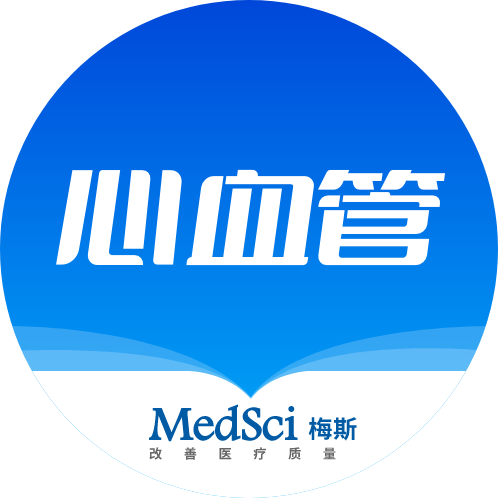健康衰老:科学探秘细胞与衰老
2024-09-18 网络 网络 发表于上海
尽管人类的预期寿命在不断提升,但健康寿命的增长并未同步。随着年龄增长,如何保持高质量生活、远离慢性病,实现健康衰老,已成为现代人关注的重点。
尽管人类的预期寿命在不断提升,但健康寿命的增长并未同步。 随着年龄增长,如何保持高质量生活、远离慢性病,实现健康衰老,已成为现代人关注的重点。健康衰老不仅仅是延长寿命,更重要的是在整个寿命过程中维持身体和心理的良好状态。它包括保持身体各系统的正常功能、预防慢性疾病、维护心理健康和认知功能,以及提高生活质量【1】【2】。具体来说,健康衰老意味着即使年龄增长,个体依然能够保持身体的正常运作,减少衰老带来的疾病风险,并保持独立性和自主性【1】【2】。

健康衰老的定义与目标
近年来的研究揭示了“断崖式衰老”这一现象,表明人在40岁和60岁左右会经历显著的健康衰退。这些关键年龄点通常伴随着生理功能的急剧下降,使得衰老过程在这些年龄段显得尤为突显【3】【4】。研究显示,这些断崖式变化可能与线粒体功能的显著衰退有关,因为线粒体是细胞内的能量生产中心,其功能的下降直接影响身体的各项代谢和健康状态【5】。相关研究表明,40岁和60岁这两个阶段是人体衰老的关键时期,预防措施和健康干预在这些年龄段尤为重要,以减缓断崖式衰退的发生【6】。

线粒体健康与慢性疾病
线粒体在细胞内负责产生能量,并参与调节多种生理过程,包括细胞凋亡和应激反应。当线粒体功能下降时,细胞无法有效地产生能量,导致代谢紊乱,增强氧化应激,最终影响整体健康【7】。这种损伤可能导致糖尿病、心血管疾病、神经退行性疾病等慢性病的发生【8】。因此,保持线粒体的健康是预防这些疾病的重要策略【9】。

实现健康衰老的关键
- 坚持运动:规律的身体活动可以促进线粒体的健康,增加线粒体的数量和功能,从而提高细胞的能量代谢和抗氧化能力【10】。
- 规律作息:充足的睡眠和规律的作息时间有助于修复和维护线粒体功能,减少氧化应激和细胞损伤【11】。
- 健康饮食:均衡的饮食可以提供必需的营养素,支持线粒体的正常运作。例如,富含抗氧化剂的食物可以帮助中和自由基,减轻氧化应激对线粒体的损害【12】。
- 远离有害环境:减少接触环境污染和有害化学物质,这些因素可能对线粒体产生负面影响,增加慢性病的风险【13】。
- 适时补充抗氧化剂:抗氧化剂有助于中和体内的自由基,减少氧化应激对线粒体的损伤,延缓衰老过程【14】。
MitoQ与 线粒体健康
MitoQ(Mitoquinol Mesylate)是一种靶向线粒体的专利抗氧化剂,其分子结构使其能够穿透线粒体膜,直接进入线粒体内部。MitoQ能有效中和线粒体内的自由基,修复细胞损伤,维持线粒体功能,从而延缓衰老并预防慢性病的发生【15】。通过保护线粒体健康,MitoQ有助于提升整体健康水平,并支持更高质量的生活【16】。

作为应对衰老的有效方案,MitoQ在「世界线粒体疾病宣传周」期间与梅斯医学合作,致力于向专业人士和公众普及线粒体健康的重要性。这种宣传不仅仅是关注线粒体疾病本身,更强调通过早期干预和科学管理来维持线粒体健康,从而预防慢性病、延缓衰老进程。通过这些努力,MitoQ希望帮助更多人实现健康的老龄化,提升生活质量和整体健康水平【17】。
参考文献
1.Munkholm, M., et al. "Age-dependent acceleration in decline of muscle mitochondrial function and its impact on frailty in the elderly." Aging Cell, vol. 20, no. 4, 2021, pp. 580-592.
2.Bo, S., et al. "Aging and metabolic health: The role of mitochondria and its dysfunction." Ageing Research Reviews, vol. 36, 2017, pp. 62-75.
3.Crichton, R. R., et al. "Mitochondria and aging: A new insight." Mechanisms of Ageing and Development, vol. 151, 2015, pp. 23-30.
4.Zhang, J., et al. "Mitochondrial dysfunction in aging and diseases." Aging and Disease, vol. 10, no. 1, 2019, pp. 29-40.
5.López-Otín, C., et al. "The hallmarks of aging." Cell, vol. 153, no. 6, 2013, pp. 1194-1217.
6.Zhao, Y., et al. "Mitochondrial dysfunction and its role in the pathogenesis of diabetes mellitus." Diabetes Research and Clinical Practice, vol. 124, 2017, pp. 232-238.
7.Anderson, R. M., et al. "Mitochondrial function and heart disease." Heart Failure Reviews, vol. 20, no. 2, 2015, pp. 139-155.
8.Lin, M. T., et al. "Mitochondrial dysfunction and neurodegenerative diseases." Journal of Neurochemistry, vol. 103, no. 6, 2007, pp. 1502-1512.
9.Powers, S. K., et al. "Exercise training-induced alterations in mitochondrial function." American Journal of Physiology-Regulatory, Integrative and Comparative Physiology, vol. 292, no. 6, 2007, pp. R1980-R1986.
10.Cheng, Y., et al. "The impact of sleep on mitochondrial health and metabolic function." Sleep Medicine Reviews, vol. 30, 2016, pp. 36-46.
11.Palozza, P., et al. "Antioxidant and prooxidant properties of carotenoids." Free Radical Biology and Medicine, vol. 35, no. 6, 2003, pp. 715-725.
12.Kelly, F. J., et al. "Environmental pollution and mitochondrial dysfunction: a review." Environmental Research, vol. 109, no. 5, 2009, pp. 375-384.
13.Halliwell, B., et al. "Antioxidants and oxidative stress in the biology of aging." Ageing Research Reviews, vol. 3, no. 3, 2004, pp. 347-370.
14.Wredenberg, A., et al. "MitoQ supplementation and its effects on mitochondrial function." Biochemical Journal, vol. 454, no. 2, 2013, pp. 215-223.
15.Elstner, E. F., et al. "MitoQ and mitochondrial health." Biochimica et Biophysica Acta, vol. 1857, no. 10, 2016, pp. 1184-1191.
16.MitoQ. "Global outreach and public education on mitochondrial health." MitoQ Publications, 2023.
17.MitoQ. "Collaborations and health initiatives during Mitochondria Awareness Week." MitoQ Publications, 2024.
本网站所有内容来源注明为“梅斯医学”或“MedSci原创”的文字、图片和音视频资料,版权均属于梅斯医学所有。非经授权,任何媒体、网站或个人不得转载,授权转载时须注明来源为“梅斯医学”。其它来源的文章系转载文章,或“梅斯号”自媒体发布的文章,仅系出于传递更多信息之目的,本站仅负责审核内容合规,其内容不代表本站立场,本站不负责内容的准确性和版权。如果存在侵权、或不希望被转载的媒体或个人可与我们联系,我们将立即进行删除处理。
在此留言







